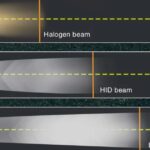Introduction
Are you a business owner looking to maximize your tax savings while investing in heavy vehicles essential for your operations? If so, you won’t want to miss out on the IRS Section 179 deduction.
This tax incentive allows businesses to deduct the full purchase price of qualifying equipment and vehicles over 6000 lbs in the year of acquisition, providing a significant financial advantage.
Staying informed about the IRS guidelines and qualifying vehicles is crucial to taking full advantage of this deduction. In this comprehensive guide, we’ll explore the Section 179 deduction, explore the list of eligible vehicles for 2024, and provide you with practical insights to navigate the process seamlessly.
What Vehicles Qualify for the Section 179 Deduction?
To be eligible for the Section 179 deduction, a vehicle must meet the following criteria:
- Gross Vehicle Weight Rating (GVWR) of 6,000 lbs or more: As specified by the manufacturer, the vehicle’s GVWR must exceed 6,000 lbs. This requirement ensures that only heavy-duty vehicles designed for business use qualify.
- Primarily used for business purposes: The vehicle must be used for business purposes more than 50% of its operational time. This includes transporting goods, equipment, or personnel related to your business operations.
- Designated as a “work” vehicle: Vehicles designated as “work” vehicles with no potential for personal use are typically considered eligible. Examples include cargo vans, box trucks, and specialized vehicles like ambulances or hearses.
- No passenger seating: Vehicles without passenger seating, such as cargo vans or box trucks, are generally considered eligible for the deduction.
It’s important to note that while heavy SUVs, pickups, and vans can qualify for a partial Section 179 deduction, there are specific limitations on the deductible amount for vehicles between 6,000 lbs and 14,000 lbs GVWR.
The Ultimate List: Vehicles Over 6000 lbs Eligible for the 2024 Tax Benefit
To help you navigate the options, we’ve compiled a comprehensive list of various makes and models that meet the weight requirement for the 2024 tax year. Here’s a table showcasing some of the eligible vehicles:
| Make | Model | Approx GVWR (lbs) |
| Chevrolet | Silverado 2500HD | 10,000 |
| Chevrolet | Silverado 3500HD | 14,000 |
| Ford | F-250 Super Duty | 10,000 |
| Ford | F-350 Super Duty | 14,000 |
| GMC | Sierra 2500HD | 10,000 |
| GMC | Sierra 3500HD | 14,000 |
| Mercedes-Benz | G 550 4×4 Squared | 7,057 |
| Nissan | NV 1500 S V6 | 8,550 |
| Toyota | Tundra 2WD/4WD | 6,800 |
This table provides an overview of the approximate GVWR for each model, but it’s essential to consult the manufacturer’s specifications or seek professional guidance to ensure accurate information for your specific vehicle.
SUVs and Crossovers
- Audi Q7, SQ7, Q8, SQ8: These luxury SUVs from Audi have a GVWR of approximately 6,900 lbs, making them eligible for the deduction.
- BMW X5 xDrive45e, X6 M50i, X7 xDrive40i, X7 M50i, X7 M50d: Several BMW X-Series models, including the X5, X6, and X7, meet the weight requirement.
- Cadillac Escalade, Escalade ESV, Escalade Platinum, Escalade ESV Platinum: The iconic Cadillac Escalade lineup, known for its powerful and spacious design, qualifies for the deduction.
- Chevrolet Suburban, Tahoe, Traverse: These Chevrolet SUVs and crossovers, ranging from the full-size Suburban to the midsize Traverse, are eligible options.
- Dodge Durango (including SRT, Citadel, R/T, and GT trims): The rugged Dodge Durango, available in various trims, is among the qualifying vehicles.
- Ford Expedition and Expedition MAX: Ford’s full-size SUVs and the extended Expedition MAX meet the weight criteria.
- GMC Yukon and Yukon XL: The GMC Yukon and its larger Yukon XL variant are eligible for the deduction.
- Infiniti QX80: The luxurious Infiniti QX80 SUV, with its substantial size and weight, qualifies for the tax benefit.
- Jeep Grand Cherokee, Grand Cherokee L, Wrangler Unlimited, and Gladiator Rubicon: Several Jeep models, including the Grand Cherokee, Wrangler Unlimited, and the Gladiator Rubicon pickup, meet the weight requirement.
- Land Rover Defender 110, Defender 90, Discovery, Discovery Sport, Range Rover, Range Rover Sport, Range Rover Velar, Range Rover Evoque, and Range Rover Evoque R-Dynamic: Land Rover’s lineup of capable SUVs and crossovers, from the iconic Defender to the sleek Evoque, are eligible for the deduction.
- Lexus LX 570: The flagship Lexus LX 570 SUV, known for its off-road capabilities and luxurious appointments, qualifies for the tax benefit.
- Lincoln Aviator and Navigator: The Lincoln Aviator and the full-size Navigator SUV meet the weight criteria.
- Mercedes-Benz GLS 580 4MATIC, GLS 600 4MATIC, G 550 4×4 Squared, and AMG G 63 4MATIC SUV: Several Mercedes-Benz models, including the GLS-Class and the iconic G-Class, are eligible for the deduction.
- Nissan Armada 2WD/4WD: The Nissan Armada, available in both two- and four-wheel drive configurations, qualifies for the tax benefit.
- Porsche Cayenne Turbo Coupe, Cayenne Turbo S E-Hybrid Coupe, and Cayenne Turbo S E-Hybrid: Porsche’s high-performance Cayenne SUVs, including the Turbo and Turbo S E-Hybrid models, meet the weight requirement.
- Tesla Model X: The all-electric Tesla Model X SUV, with its unique falcon-wing doors and impressive performance, is eligible for the deduction.
- Toyota 4Runner 2WD/4WD LTD: Toyota’s rugged 4Runner SUV, available in both two- and four-wheel drive variants, qualifies for the tax benefit.
Pickups and Trucks
- Chevrolet Silverado 2500HD, 3500HD, 4500HD, 5500HD, and 6500HD: The heavy-duty Chevrolet Silverado lineup, ranging from the 2500HD to the massive 6500HD, is eligible for the deduction.
- Ford F-250 Super Duty, F-350 Super Duty, F-450 Super Duty, and F-550 Super Duty: Ford’s Super Duty lineup, including the F-250, F-350, F-450, and F-550 models, meet the weight criteria.
- GMC Sierra 2500HD, 3500HD, 3500HD Denali, 4500HD, 5500HD, and 6500HD: Heavy-duty GMC Sierra pickups from the 2500HD to the 6500HD are eligible for the tax benefit.
- Nissan Titan 2WD S: The Nissan Titan 2WD S pickup truck qualifies for the deduction.
Vans and Passenger Vehicles
- Buick Enclave Avenir AWD, Enclave Avenir FWD, Enclave Essence AWD, and Enclave Essence FWD: The Buick Enclave, a premium midsize SUV, qualifies for the deduction in its Avenir and Essence trims, both in all-wheel drive and front-wheel drive configurations.
- Chevrolet Express Cargo Van 2500, Express Cargo Van 3500, and Express Passenger Van: Chevrolet’s Express lineup of cargo and passenger vans, including the 2500 and 3500 models, meet the weight requirement.
- Chrysler Pacifica: The Chrysler Pacifica minivan, known for its versatility and family-friendly features, is eligible for the tax benefit.
- Dodge Grand Caravan: The Dodge Grand Caravan, a popular minivan choice for families and businesses, qualifies for the deduction.
- Ford Transit Cargo Van T-250 HD, Transit Cargo Van T-350 HD, and Transit Passenger Wagon: Ford’s Transit lineup, including the heavy-duty Cargo Van T-250 HD and T-350 HD models, as well as the Passenger Wagon variant, meet the weight criteria.
- Honda Odyssey: The Honda Odyssey minivan, renowned for its reliability and practicality, is an eligible vehicle for the tax benefit.
Remember, while this list covers a wide range of vehicles, it’s always recommended to consult with a professional or refer to the manufacturer’s specifications to ensure your specific vehicle meets the eligibility criteria for the Section 179 deduction.
What Is the Section 179 Tax Deduction?
The Section 179 deduction, named after the corresponding section of the Internal Revenue Code, is a powerful tax incentive designed to encourage businesses to invest in equipment and heavy vehicles essential for their operations.
It allows businesses to deduct the full purchase price of qualifying assets, including vehicles over 6000 lbs, in the year of acquisition rather than depreciating the cost over several years.
By taking advantage of the Section 179 deduction, businesses can significantly reduce their taxable income in the year of the purchase, leading to substantial tax savings.
This deduction can be particularly beneficial for businesses that require heavy-duty vehicles for their operations, as the upfront costs can be substantial.
For the 2024 tax year, the maximum deduction limit under Section 179 is $1,160,000. This means businesses can deduct up to $1,160,000 worth of qualifying equipment and vehicle purchases, provided their total purchases do not exceed $2,890,000.
These limits are subject to change annually, so staying updated on the latest IRS guidelines is essential.
To illustrate the potential impact, let’s consider a scenario where a business purchases a new heavy-duty truck for $80,000 in 2024. Without the Section 179 deduction, the business would have to depreciate the cost over several years, reducing the upfront tax benefit.
However, by claiming the Section 179 deduction, the business can deduct the entire $80,000 from their taxable income in the year of purchase, potentially resulting in significant tax savings.
Can You Claim the Deduction on Used Vehicles?
One of the most frequently asked questions regarding the Section 179 deduction is whether it applies to used vehicles. The good news is that you can claim the deduction on used vehicles, provided they meet specific criteria.
To be eligible for the Section 179 deduction on a used vehicle, the following conditions must be met:
- New to the business: The used vehicle must be new to your business and not previously owned or used by your company.
- Meet business-use requirements: The used vehicle must be used primarily for business purposes, meeting the same criteria as new vehicles (more than 50% of operational time for business use).
It’s important to note that the deduction is based on the purchase price of the used vehicle, not its fair market value. Additionally, proper documentation, such as purchase invoices and records of business use, should be maintained to support your claim in case of an IRS audit.
Sourcing and documenting eligible used vehicles can be a wise strategy for businesses looking to maximize their tax benefits while controlling costs. Consider working with reputable dealers or sellers who can provide detailed vehicle histories and records to ensure compliance with IRS guidelines.
How to Claim the Section 179 Vehicle Tax Deduction
To claim the Section 179 deduction for your heavy vehicles, you must follow a specific process and provide the necessary documentation. Here’s a step-by-step guide to help you navigate the process:
Complete IRS Form 4562
This form, titled “Depreciation and Amortization,” is where you’ll calculate and report the Section 179 deduction for your qualifying vehicle purchases. Ensure that you accurately list the cost, description, and date of purchase for each eligible vehicle.
Gather supporting documentation
In addition to Form 4562, you’ll need to maintain detailed records and documentation for each vehicle, including purchase invoices, vehicle specifications (including GVWR), and records of business use (such as mileage logs or trip logs).
Seek professional assistance
While it’s possible to complete the process independently, seeking guidance from a qualified tax professional or vehicle valuation expert is highly recommended. These experts can ensure that you accurately calculate the deduction, comply with IRS guidelines, and provide the necessary documentation to support your claim.
Determine the depreciable value
Vehicle valuation experts play a key role in determining the depreciable value of qualifying vehicles. This value is crucial for calculating the Section 179 deduction and ensuring compliance with IRS regulations.
File your tax return
Once you’ve completed Form 4562 and gathered the required documentation, you can include the Section 179 deduction when filing your business tax return. Be prepared to provide any additional information or documentation the IRS requests if your return is selected for audit.
By following these steps and seeking professional assistance, you can ensure that you claim the Section 179 vehicle tax deduction accurately and efficiently, maximizing your potential tax savings.
Read Also: What Causes Condensation Inside A Car & How To Fix It
Case Study: A Business Owner’s Success Story
To illustrate the real-world impact of the Section 179 deduction, let’s explore the story of Jane Smith, a successful business owner in the construction industry.
Jane’s company, Smith Builders, had been growing steadily over the past few years, and she recognized the need to invest in a new fleet of heavy-duty trucks to support her expanding operations.
However, the upfront cost of purchasing these vehicles was a significant financial burden, and Jane was concerned about the impact on her company’s cash flow.
That’s when she learned about the Section 179 deduction and sought the advice of a tax professional. Jane took advantage of the deduction after carefully reviewing her options and ensuring that her desired vehicles met the eligibility criteria.
In 2024, Smith Builders purchased five new heavy-duty trucks with a combined cost of $350,000. Thanks to the Section 179 deduction, Jane could deduct the entire $350,000 from her company’s taxable income for that year.
Jane recalls the moment she realized the tremendous impact of the deduction:
“When my accountant explained the potential tax savings, I couldn’t believe it. Deducting the full cost of those trucks in the first year was a game-changer for my business. It reduced our tax burden significantly and allowed us to reinvest those savings into further growth and expansion.”
By claiming the Section 179 deduction, Smith Builders minimized its tax liability and retained more capital for reinvestment in the business. This financial flexibility enabled Jane to pursue new projects, hire additional staff, and position her company for long-term success in the competitive construction industry.
Jane’s story powerfully reminds us of the importance of staying informed about tax incentives like the Section 179 deduction and seeking professional guidance to maximize their benefits.
Conclusion
Investing in heavy vehicles essential for your business operations can be a significant financial commitment, but the IRS Section 179 deduction offers a valuable opportunity to offset those costs and maximize your tax savings. You can take advantage of this powerful tax incentive by understanding the eligibility criteria, navigating the claim process, and seeking professional assistance.
Remember, the key to success lies in staying informed about the latest IRS guidelines and qualifying vehicles. Consult with tax professionals vehicle valuation experts, and refer to reputable sources like the comprehensive list provided in this guide to ensure you’re making informed decisions.
Don’t let the opportunity for substantial tax savings slip through your fingers. Embrace the Section 179 deduction and position your business for growth and success in the future.







